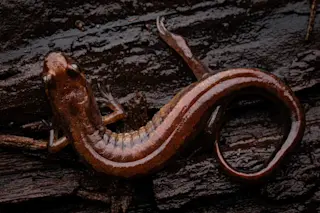The Potamotherium valletoni, also known as a “river beast,” was an ancient relative to seals with an otter-like appearance. The early animal wandered the Earth about 23 million years ago, and it likely used its whiskers to find food and explore underwater.
Modern-day seals or pinnipeds, such as harbor, elephant and ringed seals, are highly adapted to their watery environments and use their whiskers to detect vibrations underwater. However, when and how they adapted to life underwater has stumped researchers. So, a team of experts turned to where they could find an answer: ancient seal brains.
A recent study published in Communications Biology sheds light on how ancient seals transitioned from life on land to living underwater. Before, it was also unclear when seals and their ancient relatives began to use their whiskers to forage.
Ancient seals appeared more otter-like than modern-day ones, dwelling in freshwater environments or walking on ...














